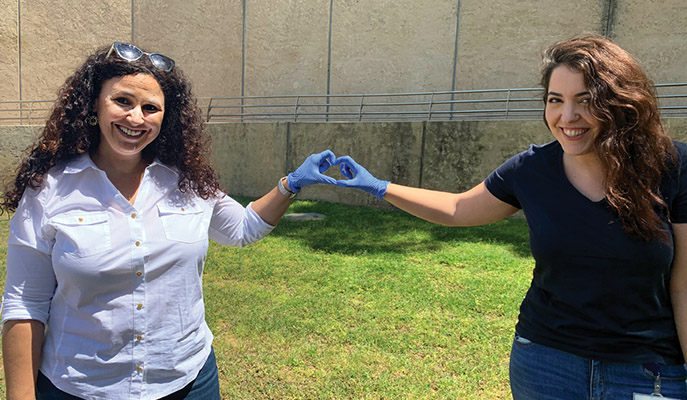Researchers uncover what may be a see-through secret to human heart repair based on a tropical fish.
By Yakir Benzion, United With Israel
Israeli scientists have uncovered the fishy secret behind the extraordinary zebrafish – which has a heart that can, as if by a miracle, completely regenerate if damaged.
Prof. Karina Yaniv and her team of biology researchers at the Weizmann Institute of Science in Rehovot wanted to find out how the zebrafish does it, and in doing so discovered a breakthrough that might eventually help humans to mend ‘broken hearts’ that have been damaged by heart disease.
Zebrafish are perfect for exploring this question because unlike mammals, they have a remarkable capacity for heart regeneration: Within approximately two months after being injured, up to one-third of their heart tissue can regrow without scarring. An injured mammalian heart, in contrast, does not naturally regenerate at all and instead forms scar tissue at the injury site.
Both the cardiovascular system and the lymphatic system are crucial for the health of a heart, especially when it has to recover from injury. However, the researchers also identified two distinct types of lymphatic vessels in the fish heart, which form by different mechanisms and perform different tasks. These findings may help develop new ways for promoting heart repair and facilitating the growth of organs for transplant.
The human body’s network of lymphatic vessels serves as a conduit for immune cells and drains fluid, as well as providing individual services to various organs.
In their earlier research, Yaniv and her colleagues saw that a zebrafish embryo has lymphatic vessels formed by two separate mechanisms, one by sprouting and growing from pre-existing vessels, and the other from isolated cells called angioblasts. These are found in adult zebrafish with each set of lymphatic vessels having its own genetic markers and responding to its own molecular signals.
The scientists then found the same two distinct types of lymphatic vessels in the hearts of mice, indicating that somehow this had continued in both fish and mammals during the course of evolution.
The next step was key: Do either or both types play a role in the zebrafish’s heart tissue regeneration? They discovered that the fish hearts’ regenerating area contained lymphatic vessels of just one type – those derived from isolated lymphatic cells, rather than vessels. These cells then merged together into vessels, but remained distinct.
And now they realized that the two types of lymphatic vessels perform different functions in the heart, with the cell-derived vessels contributing to heart regeneration after injury.
Not only that, but the heart regeneration process cannot take place without them. When the scientists studied mutant zebrafish with no lymphatic vessels at all, the hearts of these mutants failed to regenerate after injury even though their blood vessels were entirely normal.
“We’ve shown that the lymphatic system plays a crucial role in heart regeneration in the zebrafish,” said Prof. Yaniv. “By clarifying this role further, we may learn what the fish heart ‘knows’ about regeneration that the mammalian one doesn’t, and use this knowledge to heal human hearts.”
With more knowledge in this field, the scientists hope to find tools to develop new ways of preventing tissue scarring and promoting healing after heart attacks and other types of injury to the heart muscle. In addition, knowing exactly how the lymphatic system contributes to heart muscle growth may help them to grow heart tissue in laboratory conditions that could then be used in transplants.
